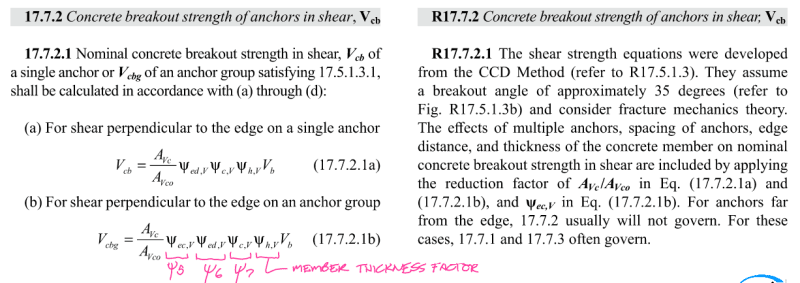Backcheckrage
Structural
I have a situation where I have a precast panel suspended with gravity support anchors along the bottom.
They are embedded in the panel so therefore AS/NZS 3101 section 17.5.8.2 should apply for calculation the effective project shear prism project area (Av). I get a very small value due to the area being truncated by a thin concrete panel!... my question is can this equation be ignored if the anchors are "far" from concrete edge (C1 dimension)... see attached.
In other words, I would expect the capacity of the steel bolts to govern (or bolt pry-out from concrete).... and not the shear cone failure?
Any thoughts or experience is appreciated.
[URL unfurl="true"]https://res.cloudinary.com/engineering-com/image/upload/v1634323830/tips/image_for_query_jfjgnv.pdf[/url]
They are embedded in the panel so therefore AS/NZS 3101 section 17.5.8.2 should apply for calculation the effective project shear prism project area (Av). I get a very small value due to the area being truncated by a thin concrete panel!... my question is can this equation be ignored if the anchors are "far" from concrete edge (C1 dimension)... see attached.
In other words, I would expect the capacity of the steel bolts to govern (or bolt pry-out from concrete).... and not the shear cone failure?
Any thoughts or experience is appreciated.
[URL unfurl="true"]https://res.cloudinary.com/engineering-com/image/upload/v1634323830/tips/image_for_query_jfjgnv.pdf[/url]


